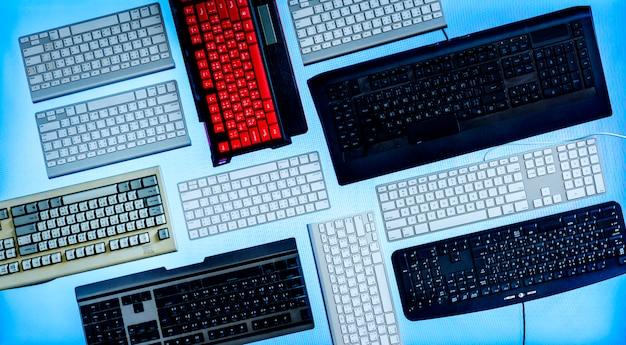In this fast-paced digital era, keyboarding has become an essential skill in almost every profession. When it comes to the medical field, where accuracy, efficiency, and time management are critical, proficient keyboarding skills can make a remarkable difference. From taking patient notes to communicating with colleagues and entering data into electronic medical records, healthcare professionals rely heavily on computers and keyboards to streamline daily tasks. In this blog post, we’ll explore why keyboarding is so important in the medical field, how to improve typing speed, and the benefits it brings to healthcare professionals.

Why Keyboarding Skills are Vital in the Medical Field
In the fast-paced world of medicine, every second counts. That’s where keyboarding skills come in, and let me tell you, they are more important than ever. Whether you’re a doctor, nurse, or medical administrator, being a speedy typist can make all the difference in providing efficient patient care. So, put on your typing gloves, because we’re about to dive into why keyboarding is crucial in the medical field.
Accurate Documentation
Picture this: you’re a busy doctor, running from one patient to another, trying to document everything accurately. Now, imagine if your keyboarding skills were as slow as a snail on a leisurely stroll. You’d be spending ages trying to type up all those notes, and let’s face it, your patients don’t have time for that.
By honing your keyboarding skills, you’ll be able to input information quickly and accurately. And in the medical field, accuracy is everything. Nobody wants a patient to receive the wrong medication because of a typo, right?
Efficient Communication
In the medical field, effective communication can be a matter of life and death. When time is of the essence, being able to convey critical information promptly is crucial. That’s where good keyboarding skills come into play.
Imagine a doctor reaching out to a specialist in another part of the hospital, desperately seeking advice. With lightning-fast typing abilities, they can quickly draft an email or IM, explaining the situation with clarity and urgency. Instant communication means instant collaboration, which ultimately leads to better patient outcomes.
Electronic Medical Records (EMRs)
Gone are the days of sifting through stacks of paper records, trying to decipher doctors’ handwriting that’s more confusing than hieroglyphics. Welcome to the future of healthcare, where electronic medical records (EMRs) reign supreme.
EMRs allow healthcare professionals to access patient information with a few keystrokes. But here’s the catch – you need to be able to type quickly and efficiently to make the most of this technological advancement. No pressure, right?
Time Management
Doctors have notoriously busy schedules. From patient appointments to procedures and everything in between, time is always of the essence. Keyboarding skills can amplify their efficiency, ensuring they get through their workload without feeling overwhelmed (or in need of a caffeine IV drip).
A proficient typist can zip through electronic charts, update prescriptions, and send important emails in a fraction of the time it takes Uncle Bob to reply to one text message. Talk about maximizing productivity!
The Bottom Line
Let’s face it, nobody wants their healthcare provider to be a hunt-and-peck typist. In the fast-paced world of medicine, keyboarding skills are no longer just a bonus – they’re a necessity. Accurate documentation, efficient communication, EMRs, and time management are just a few reasons why being a master of the keyboard can set you apart in the medical field.
So, embrace the clacking of keys, sharpen those typing skills, and become the star typist that every healthcare team needs. Your patients will thank you, and you’ll have more time to save lives, one keystroke at a time.

FAQ: Why is Keyboarding Important in the Medical Field?
Why is keyboarding essential in the medical field
In the fast-paced world of medicine, every second matters. Keyboarding plays a vital role in ensuring efficiency and accuracy when it comes to medical documentation. Whether it’s updating patient records, inputting test results, or communicating with colleagues, having strong typing skills is a must. Plus, being a pro at keyboarding can save you from embarrassing autocorrect blunders – trust us, patients don’t appreciate the wrong prescription!
How quickly can you master touch typing
Ah, the age-old question! The time it takes to become a touch typing wizard varies from person to person. Practice makes perfect, or at least close to it. With regular training, commitment, and a sprinkle of determination, you can expect to master touch typing within a matter of months. Just remember, Rome wasn’t built in a day, and neither were speedy typists. So keep those fingers moving, and before you know it, you’ll be typing at the speed of light!
Who holds the world record for the fastest typing speed
Hold onto your stethoscope! The current titleholder for the fastest typist in the world is Barbara Blackburn. Back in 2005, this lightning-fast lady set a mind-boggling record by typing a whopping 212 words per minute (wpm). Hats off to her nimble fingers! Keep in mind, though, that achieving such superhuman speeds requires years of dedication and practice. Don’t worry, though – even if you don’t reach Barbara’s level, you can still achieve impressive typing speeds that would make your fellow medical professionals envious.
What’s the best sentence to practice typing
We’ve got just the sentence to get your fingers tripping over the keys: “The quick brown fox jumps over the lazy dog.” This sentence, known as a “pangram,” contains all the letters of the alphabet, making it perfect for practicing your typing skills whilst giving your brain a tongue twister challenge. So, channel your inner fox, jump those fingers, and type away!
What is the purpose of typing in the medical field
Aside from being able to jot down grocery lists at lightning speed, typing skills are essential in the medical field for a multitude of reasons. Accurate and efficient keyboarding ensures that patient records are up to date, prescriptions are error-free, and medical reports are easily accessible. Plus, with the rise of electronic health records, being a proficient typist ensures seamless communication and collaboration among medical professionals. So, embrace the keyboard – it’s your trusty sidekick on your medical journey!
How often should I practice typing
To become a keyboarding virtuoso, consistency is key. It’s recommended to practice typing at least 15-30 minutes per day. Remember, regularity trumps cramming. By incorporating typing exercises into your daily routine, you’ll steadily improve your speed, accuracy, and muscle memory. Before you know it, you’ll be typing faster than a caffeine-filled intern on their third cup of coffee!
What qualifies as slow typing speed
While speed demons like Barbara Blackburn are typing at the speed of light, “slow” is a relative term. In the medical field, a typing speed of around 40-60 words per minute (wpm) is considered average. However, keep in mind that accuracy is equally important. It’s better to type slowly and accurately than to rush and make mistakes that could have serious consequences. Remember, the tortoise won the race, even if the hare typed faster!
Ready to conquer the keyboard?
Whether you’re a medical professional or aspiring to be one, honing your keyboarding skills is crucial. From streamlining documentation tasks to reducing errors, typing proficiency ensures you can focus on what really matters – providing top-notch medical care. So, let those fingers dance across the keys, embrace the learning process, and soon enough, you’ll be typing your way to success in the medical field!
